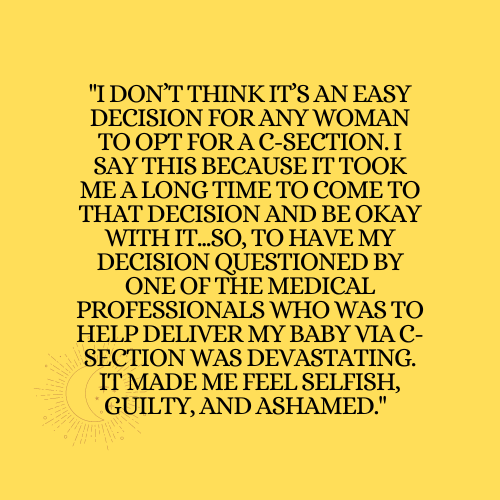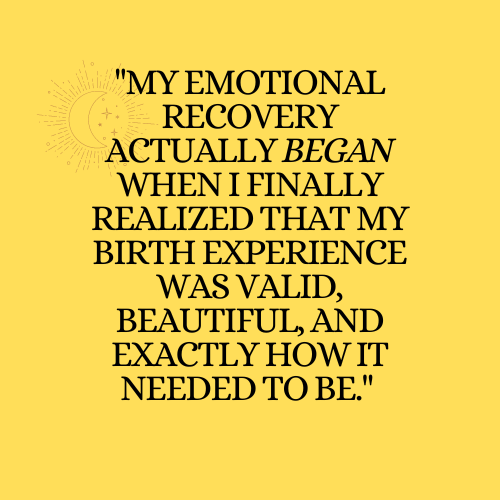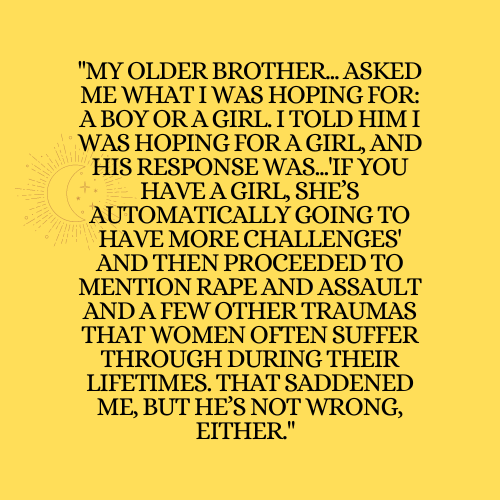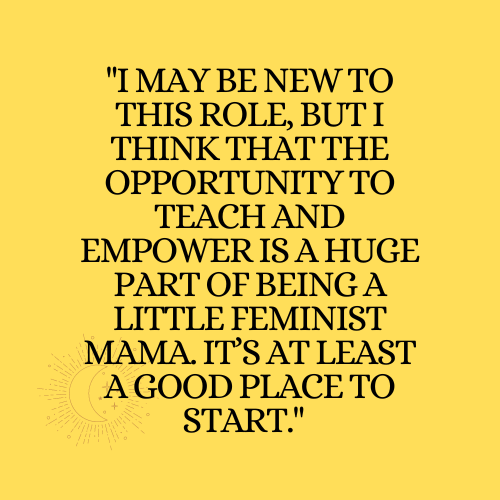Revisiting Charlotte Perkins Gilman’s “The Yellow Wallpaper” After Childbirth
A Summary of “The Yellow Wallpaper”
Charlotte Perkins Gilman’s short story “The Yellow Wallpaper” (1892) is considered a classic within the Gothic genre and it’s likely that you’ve encountered it at some point or another in your life. I know I’ve encountered it a few times: the first time was in high school when we read and analyzed it; the second time was in graduate school when I was a teaching assistant and taught it for first-year English; and the third time was just recently after giving birth to my daughter. Overall—because I taught it and was expected to familiarize myself with the details of it—I’ve probably read the story at least ten times.
But if you’re not familiar with “The Yellow Wallpaper,” let me give you a synopsis.
The story is narrated by an unnamed woman who is staying in a vacation home with her newborn baby and doctor husband, John. The narrator reveals that she has nervous and anxious tendencies—though John does not believe the narrator is sick at all—and has therefore been prescribed a “rest cure” that consists of rest (of course), light exercise, fresh air, and absolutely no overly stimulating activities such as writing. She disregards the last part of her prescription and continues to write, anyway.
During their stay at the vacation home, John insists that he and his wife reside in one particular room which—according to the narrator—has a few peculiarities: a heavy bed that appears to be bolted to the floor, barred windows, and hideous yellow wallpaper with a strange pattern (or, rather, strange lack of pattern). Although it’s clear that the room may very well have been used as a holding cell for mentally unstable individuals in the past, the narrator insists that it was likely used as a nursery.
The story revolves around the narrator’s increasingly unhealthy obsession with the disturbing yellow wallpaper—as well as the woman or women she claims to see lurking behind it—and ends with her ripping it down while John is away. When John returns, he faints at the sight of his wife creeping on the floor around the outskirts of the “nursery.”
A seemingly simple yet eerie tale.
Some Common Interpretations of “The Yellow Wallpaper”
As with all literature, “The Yellow Wallpaper” could have any number of interpretations depending upon the reader.
One of the most common interpretations, however, is that the yellow wallpaper—with its horrid colour, odour, and lack of followable pattern—represents the patriarchal shackles that women are often forced to wear simply because they are women. In this interpretation read through a feminist lens, it is not only the narrator who is affected by the yellow wallpaper but women in a more general sense. This explains why the narrator sometimes sees other women lurking behind the wallpaper. The ending of the story—the narrator ripping down the yellow wallpaper—could then signify her rejection of, and freedom from, the patriarchal norms used to oppress her and the other women trapped behind the paper. Alternatively, one might read the ending as the narrator ultimately and unfortunately accepting the domestic role that she and other women are expected to occupy by literally becoming a part of the house as she slithers around the outskirts of the room with the yellow wallpaper.
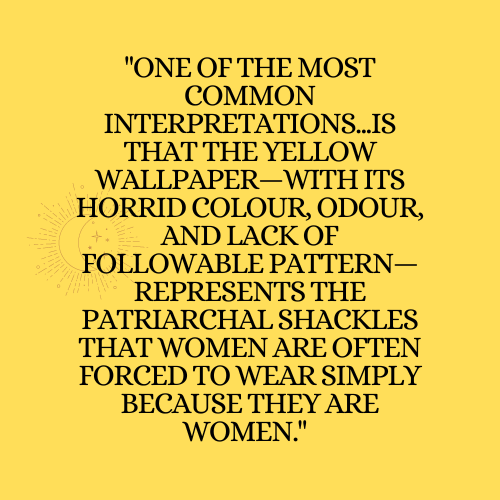
Another common interpretation of the story—and one that could very much be connected to the above interpretation—is that the yellow wallpaper represents the narrator’s mental state. This interpretation might be bolstered by the fact that the room in which she is staying is suitable for a mentally unstable patient. Throughout the story, she becomes more and more obsessed with the yellow wallpaper—she is constantly looking at it, analyzing it, day and night—until she tears it down indicating her final descent into insanity or psychosis. It’s quite obvious that the narrator’s psychosis is worsened by her doctor husband since he constantly invalidates her feelings and treats her like a child. If you’re a fan of blood and gore—like myself—the more gruesome version of this interpretation is that the yellow wallpaper is not wallpaper at all: it is the narrator’s skin. This means that, by the end of the story, the narrator reaches a point of mental instability where she actually tears off her own skin, and perhaps this is the real reason why John faints at the sight of her.
Regardless of the way that you choose to read “The Yellow Wallpaper,” the feminist underpinnings are undeniable.
Postpartum Depression in “The Yellow Wallpaper”
After experiencing Postpartum Depression (PPD) for myself for the first month after giving birth to my daughter, the part of “The Yellow Wallpaper” that interests me most is the narrator’s illness and her mistreatment by her doctor husband. It could easily be argued that the narrator is suffering from PPD. In addition to the fact that the narrator has recently given birth, she also experiences many symptoms associated with PPD: anxiety, depression, and irritability; not being able to bond with the baby or take care of the baby’s basic needs (another woman takes care of the baby rather than the narrator); restlessness and insomnia; difficulty concentrating or focusing; crying episodes; and—if one chooses to interpret the yellow wallpaper as the narrator’s skin rather than wallpaper—self-harm.
In this day and age, the narrator’s illness would be recognized as PPD and treated as such. However, during the time that the story was written, PPD wasn’t necessarily a recognizable illness. This is confirmed in “The Yellow Wallpaper” by the fact that the narrator’s doctor husband doesn’t believe that she is suffering from any kind of illness. At times, it seems as though he acknowledges the narrator’s illness and goes along with the “rest cure” simply to appease her.
And the negligent doctor husband isn’t even the worst part about the narrator’s medical misdiagnosis and mistreatment in the story. The worst part is that “The Yellow Wallpaper” is often thought to be a semi-autobiographical piece of literature based upon Perkins Gilman’s personal experience of misdiagnosis and mistreatment after the birth of her own daughter. So, the medical negligence we see throughout the story is not fiction. It was something that was indeed a regular occurrence for women during the nineteenth century.

After my experience with PPD, I can’t imagine what it would feel like to have those symptoms minimized and rejected by a medical professional like they were in Perkins Gilman’s case. In fact, it’s dangerous and can lead to further illness, which is exactly what she shows us in the story. Now, I’m not saying the medical industry is perfect at this point in time: far from it. They could definitely still do more to help individuals combat and cope with PPD in contemporary times—I was lucky that my midwife was so supportive when I was going through my bout with PPD and she provided me with resources to aid with that difficult time—but at least it’s recognized as a serious illness nowadays and there are treatments that can be offered.
I hope that there are no longer women suffering in silence alone during postpartum and being tortured by the menacing yellow wallpaper staring back at them from across the room. And if there are, myself and countless other women are always around to provide support.
